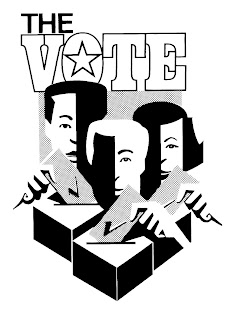Early voting describes any system where election rules and procedure are relaxed to allow voters to cast their ballot prior to the official Election Day. By the late 1990s twenty U.S. states had at least one type of early voting on the books. The aftermath of the 2000 presidential elections and passage of the 2002 Help America Vote Act (HAVA) spurred the further spread of early voting. Today, early voting has been largely adopted outside the Northeast and high numbers of early voters exist mainly in large states and those with large rural populations. The highest rates of early voting occur in states with the most established early voting systems.
Reformers argue that maximization of turnout is a primary goal and reducing barriers between voters and the polls is an important method for achieving higher turnout. According to the authors, however, “the empirical literature has found decidedly mixed results.” They assess three primary means of early voting employed by U.S. states: early in-person voting (EIP), no-excuse absentee voting, and vote-by-mail (VBM) and find that “…EIP, absentee balloting, and VBM all do result in a more accurate count.” However, the authors assert “the verdict on cost-savings is less clear” but nevertheless “flat or slightly positive cost savings have led to widespread recommendations in favor of all varieties of early voting.”
Most existing studies of early voting are dated and limited in relevance by their original design. By employing a more recent model of voter turnout with updated data covering presidential and midterm elections in the period 1980-2002, this study explores whether early voting reforms do in fact increase turnout across a wide variety of electoral and campaign contexts, different kinds of voting reforms, and over time. “We find little evidence that early voting reforms increase turnout,” state the authors, “with the exception of VBM in Oregon, and then only in presidential elections.” Furthermore, “in midterm elections, none of the reforms has a statistically significant impact on turnout….”
This new study confirms much of the existing literature regarding the modest impact of early voting reforms on turnout. “We remain skeptical of those who advocate in favor of early voting reforms primarily on the basis of increased turnout,” conclude the authors. “Both these results, and prior work in political science simply do not support these claims. There may be good reasons to adopt early voting…but boosting turnout is not one of them.” # # #
The American Political Science Association (est. 1903) is the leading professional organization for the study of politics and has over 14,000 members in 80 countries. For more news and information about political science research visit the APSA media website, www.politicalsciencenews.org.
Technorati Tags: Voter Turnout and U.S. Elections or Early Voting Measures and Help America Vote Act or Presidential Podcast 11/03/07 and Veterans Day Honoring All Who Served and Novel gate dielectric materials: perfection is not enough












No comments:
Post a Comment